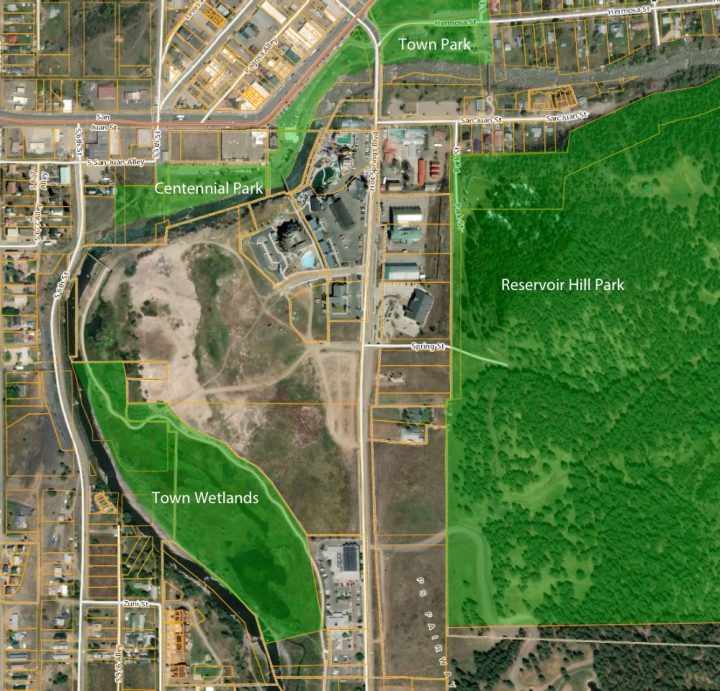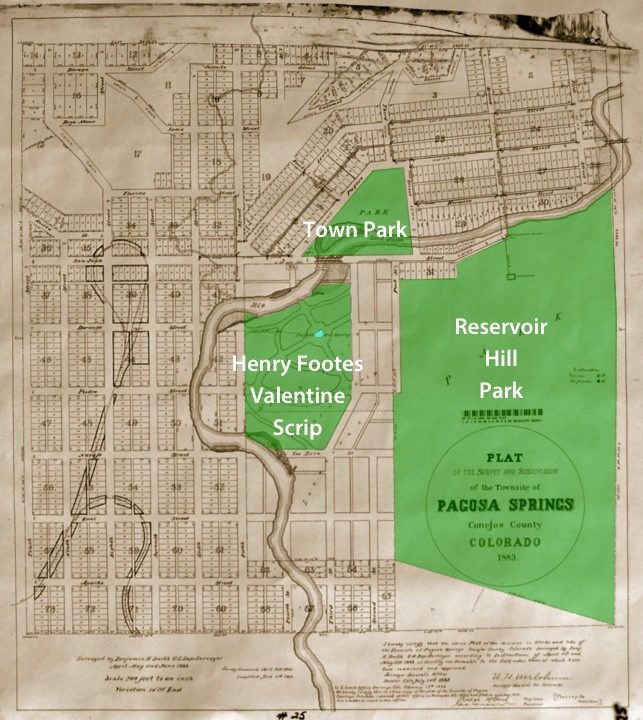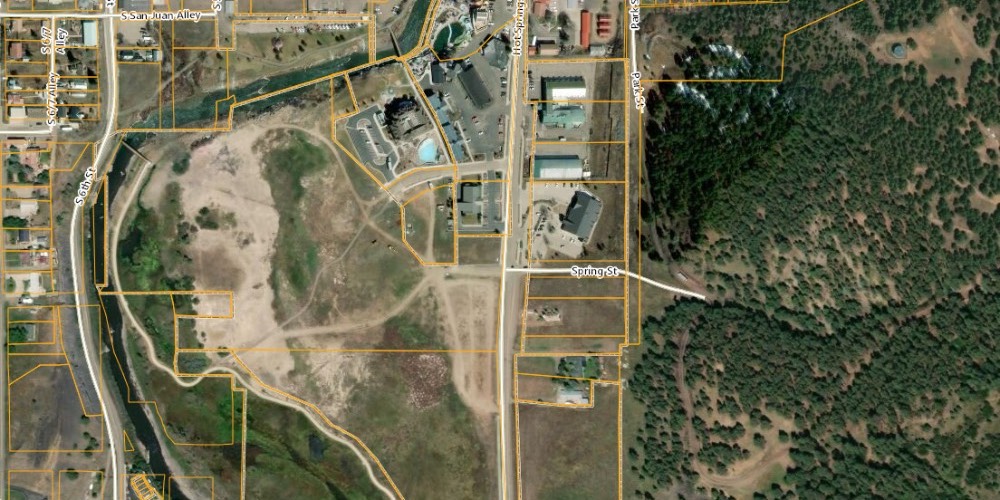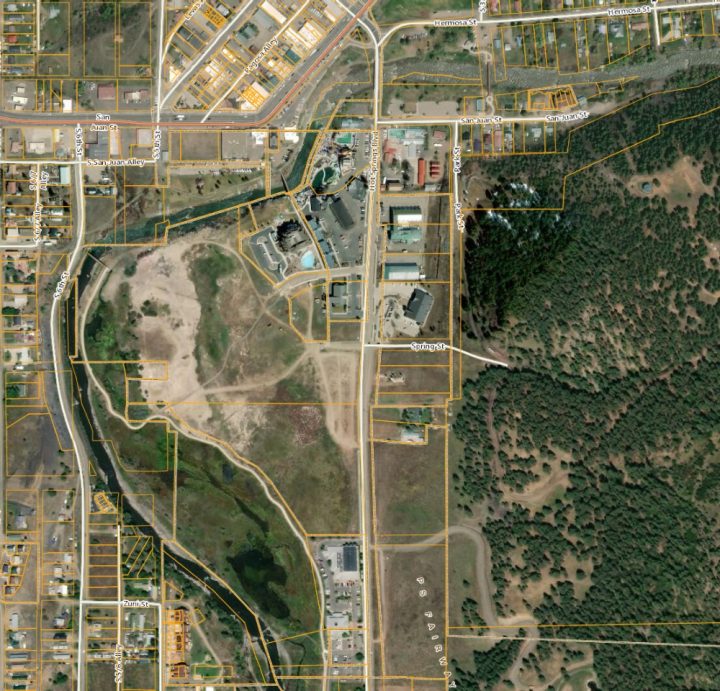One thing I truly appreciate about public conversations — such as the one that took place at the EcoLuxe Hotel on February 7 — is the fascinating differences of opinion and perspective that make themselves apparent. These differences become apparent especially when the group senses that their input is truly being listened to, and valued.
Here is architect Mike Moore, of ‘tres birds workshop’ talking about his desire to hear from the Pagosa public about the development of 27 acres of vacant downtown property located between Hot Springs Boulevard and the San Juan River — a development that he will presumably have a hand in designing, at some point in the near future:
“Every project that we work on, we start it without any assumptions. We didn’t come to Pagosa thinking we knew what you wanted, or what David [managing principal David Dronet] wanted or what the community wanted. It was truly a clean slate. We started this project with what we call ‘data harvesting’ which is really to understand ‘what is.’ So we’ve made a series of maps. And we’ve spent time here. Day and night. So we’ve had two seasons now: fall and winter. We’ll get to know spring and summer…
Mr. Moore has been retained to assist with a new joint venture between the Springs Resort and the owner of the 27 acres in question, Jack Searle. I took Mr. Moore to mean — when he used the term, ‘what is’ — that his firm wants to begin this development project by understanding both the physical and the socio-economic landscape that surrounds the vacant property.
So let’s get oriented to ‘what is.’
Here’s a Google image of the area around Hot Springs Boulevard… the street that forms a dividing line down the middle of the image. The San Juan River enters the scene at the top right and flows counter-clockwise around a couple of bends, to exit the picture at the bottom. The historic retail district is at the top, just left of center. At the very bottom, center, is the Ross Aragon Community Center and Town Hall.
Yesterday, I modified this Google image slightly to highlight the municipal parks located in this downtown area of Pagosa Springs. On the right, we find the relative wilderness of Reservoir Hill Park. At the top of the map is Town Park — the community’s key gathering place for outdoor events. West of Town Park is Centennial Park, which has been essentially donated to the non-profit Geothermal Greenhouse Partnership, thanks to the political maneuvering of former mayor Ross Aragon.

At the bottom left, we have the Town-owned wetlands, a favorite hang-out for numerous bird species.
In the center of this landscape — nestled between three Town parks and the Town wetlands — we find the vacant 27-acre parcel owned by Mr. Searle (operating as ‘The Springs Partners LLC’) along with three motels: The Springs Resort & Spa; the Healing Waters Resort & Spa; and the Quality Inn.
Plus a post office, a bank, and a couple of residential homes.
As I worked on the map, above, I couldn’t help but think about the historic plat of Pagosa Springs, surveyed by Benjamin H. Smith in 1883 — eight years before the town was officially incorporated. Here’s a colorized version of that historic drawing, showing the areas that Mr. Smith indicated as ‘Town Parks.’

I’m actually making an assumption here, that the central area surrounding the Great Pagosa Hot Spring (shown as the small blue dot) was, in 1883, intended to be a “Park.” The wording on the historic map says: “Henry Footes Valentine Scrip.”
In 1875, Henry Foote had filed a “Valentine scrip” in Del Norte, Colorado, claiming the rights to forty acres surrounding the Great Pagosa Hot Spring.
From Wikipedia:
Land scrip was a right to purchase federal public domain land in the United States, a common form of investment in the 19th century. As a type of federal aid to local governments or private corporations, Congress would grant land in lieu of cash… These grants came in the form of railroad land grants, university land grants, and grants to veterans for war service.
The American Civil War had ended just ten years earlier, when Henry Foote filed his scrip for the forty acres surrounding the Pagosa Hot Spring. We can assume that Mr. Foote was himself a war veteran, and — due to enormous federal debts generated by the war — had probably not been paid his full wages as a soldier. So perhaps the federal government instead granted him forty acres of land, in the middle of Indian territory, in 1875.
Eight years later, when Benjamin Smith platted the future town into sharply geometric rectangles, he drew the area around the Spring with gently curved paths such as one would find in a municipal park. Based on what I’ve read in history books, I believe there was once a plan was to build a federal convalescent hospital next to the Great Spring, to allow Civil War veterans suffering from wounds and war-related diseases (and, no doubt, from PTSD) to soak and recuperate in the “healing waters.”
The hospital was never built, and we can understand why; transportation to Pagosa Springs, in 1883, was not exactly convenient for a wounded Civil War veteran. But by 1890, the population of the county had nevertheless grown to around 800 residents. (US Census)
By 1900, the county population was closer to 2,000. About half the residents lived in the downtown district, within walking distance to the Great Spring. From what I can tell, the “Henry Foote Valentine Scrip” remained basically a public area, where families sometimes erected private bath houses to make use of the “healing waters” that flowed from numerous fissures surrounding the Great Spring. (The Mother Spring bubbles up at about 145 degrees, a fatally hot temperature for bathing purposes.)
I can’t say when, exactly, the vacant 27 acres in the midst of this geothermal wonderland converted completely into ‘private property.’ We now recognize all the property along Hot Springs Boulevard — the motels, the bank, the private homes — as ‘private property.’ (With exceptions made for the US Post Office, the Community Center and Town Hall.) Even the Mother Springs, itself, is considered private property, although the water itself is deemed to be a public resource controlled by Colorado water law.
Today, only a small percentage of the community’s population lives within walking distance of the Mother Spring.
With that background, the conversation at the EcoLuxe Hotel on February 7 took an interesting turn when Springs Resort managing principal David Dronet asked the audience what they thought about a “public gathering place” in the middle of the vacant 27 acres…


